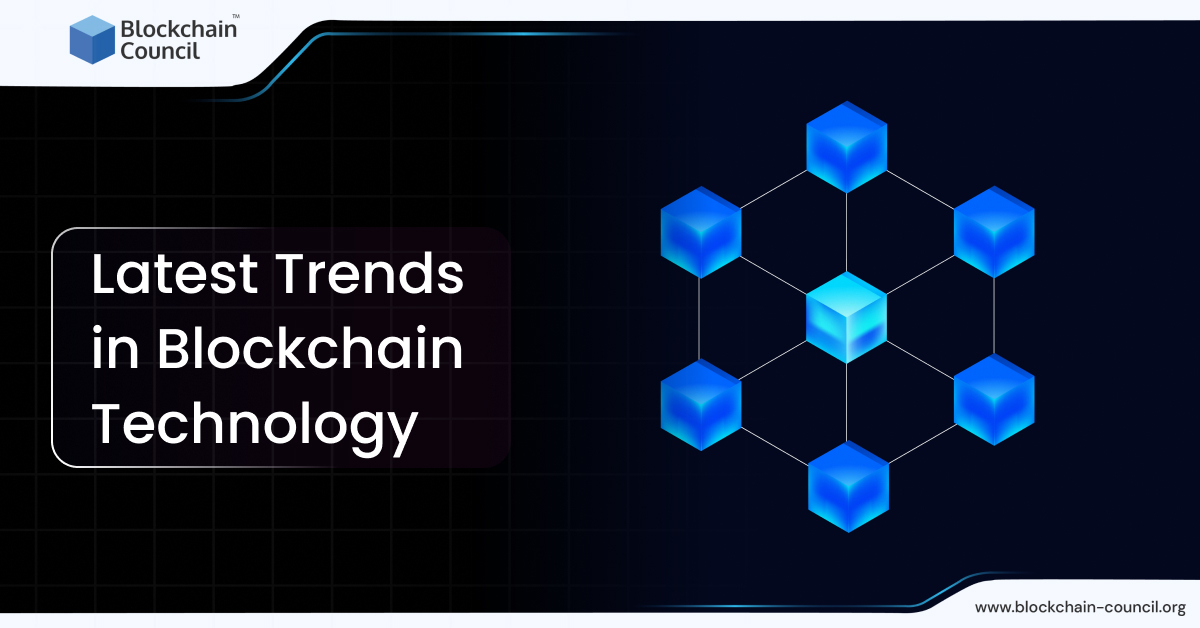- Blockchain Council
- April 16, 2024
In the ever-evolving realm of blockchain technology, keeping abreast of the latest advancements is paramount for professionals and enthusiasts alike. Various trends, from decentralized finance (DeFi) to blockchain interoperability, are molding the landscape of blockchain development and adoption. This article explores the notable trends in blockchain technology and their potential implications across different sectors.
[embedded content]
Decentralized Finance (DeFi)
Decentralized finance, known as DeFi, stands out as a significant trend in the blockchain sphere. DeFi represents a decentralized network of financial applications and services constructed on blockchain networks, enabling users to access financial services without traditional intermediaries like banks or brokers. DeFi platforms offer diverse opportunities, including lending, borrowing, decentralized exchanges, and yield farming, allowing users to earn interest, trade assets, and access liquidity.

The remarkable growth of DeFi has spurred innovation and experimentation in the sector, with developers exploring novel use cases and financial primitives. Nevertheless, DeFi encounters challenges such as scalability, security, and regulatory ambiguity that must be tackled for wider adoption.
Non-Fungible Tokens (NFTs)
The surge of interest in Non-fungible tokens (NFTs) in recent years is attributable to their capacity to represent unique digital assets on the blockchain. In contrast to fungible cryptocurrencies like Bitcoin or Ethereum, which are interchangeable on a one-to-one basis, NFTs are indivisible and signify ownership of specific digital items such as art, collectibles, virtual real estate, and in-game assets.
NFTs have created fresh opportunities for creators, artists, and collectors to monetize and trade digital content in a decentralized and transparent manner. The NFT market has experienced exponential growth, with high-profile sales and auctions making global headlines. However, challenges like copyright concerns, scalability issues, and environmental considerations have surfaced as the NFT space evolves.
Blockchain Interoperability
Interoperability, the capability of distinct blockchain networks to communicate and interact, is a pivotal trend shaping the future of blockchain technology. With the proliferation of blockchain platforms and protocols, achieving interoperability is crucial for facilitating seamless asset transfers, cross-chain transactions, and interoperable decentralized applications (dApps).
Various interoperability solutions are under development to tackle this challenge, including blockchain bridges, cross-chain communication protocols, and interoperability standards. Projects like Polkadot, Cosmos, and Chainlink are at the forefront of constructing interoperable infrastructure that links disparate blockchain ecosystems, unlocking new possibilities for collaboration and innovation.
Scalability Solutions
Scalability remains a pressing issue for blockchain technology, especially as the demand for decentralized applications and transactions escalates. Challenges such as high transaction fees, network congestion, and sluggish confirmation times have impeded the scalability of blockchain networks like Bitcoin and Ethereum, constraining their ability to handle a large volume of transactions.
To address scalability concerns, diverse solutions are being explored, encompassing layer-2 scaling solutions, sharding, and off-chain scaling protocols. Ethereum 2.0, a significant upgrade to the Ethereum network, aims to enhance scalability through the implementation of proof-of-stake consensus and sharding. Concurrently, layer-2 solutions like the Lightning Network and Optimistic Rollups present promising avenues for scaling Ethereum and other blockchain platforms.
Governance and Sustainability
As blockchain networks evolve, governance and sustainability have gained prominence in ensuring the enduring viability and stability of decentralized ecosystems. Governance mechanisms dictate decision-making processes and protocol updates within blockchain communities, influencing aspects such as protocol enhancements, network governance, and community engagement.
Moreover, sustainability considerations, particularly regarding energy consumption and environmental impact, have garnered attention as blockchain networks like Bitcoin continue to consume substantial energy for mining activities. Initiatives promoting sustainability, such as transitioning to more energy-efficient consensus mechanisms and offsetting carbon emissions, are gaining traction within the blockchain community.
Conclusion
The blockchain industry is in a constant state of flux, driven by technological innovation, regulatory advancements, and shifting market dynamics. By staying abreast of the latest trends and developments in blockchain technology, industry stakeholders can navigate the swiftly changing landscape and capitalize on opportunities for innovation and advancement.
From decentralized finance and non-fungible tokens to blockchain interoperability and scalability solutions, the future of blockchain holds immense promise for reshaping industries, empowering individuals, and instigating positive societal transformations. As these trends unfold, collaboration, innovation, and community involvement will serve as pivotal catalysts for progress in the blockchain ecosystem.

